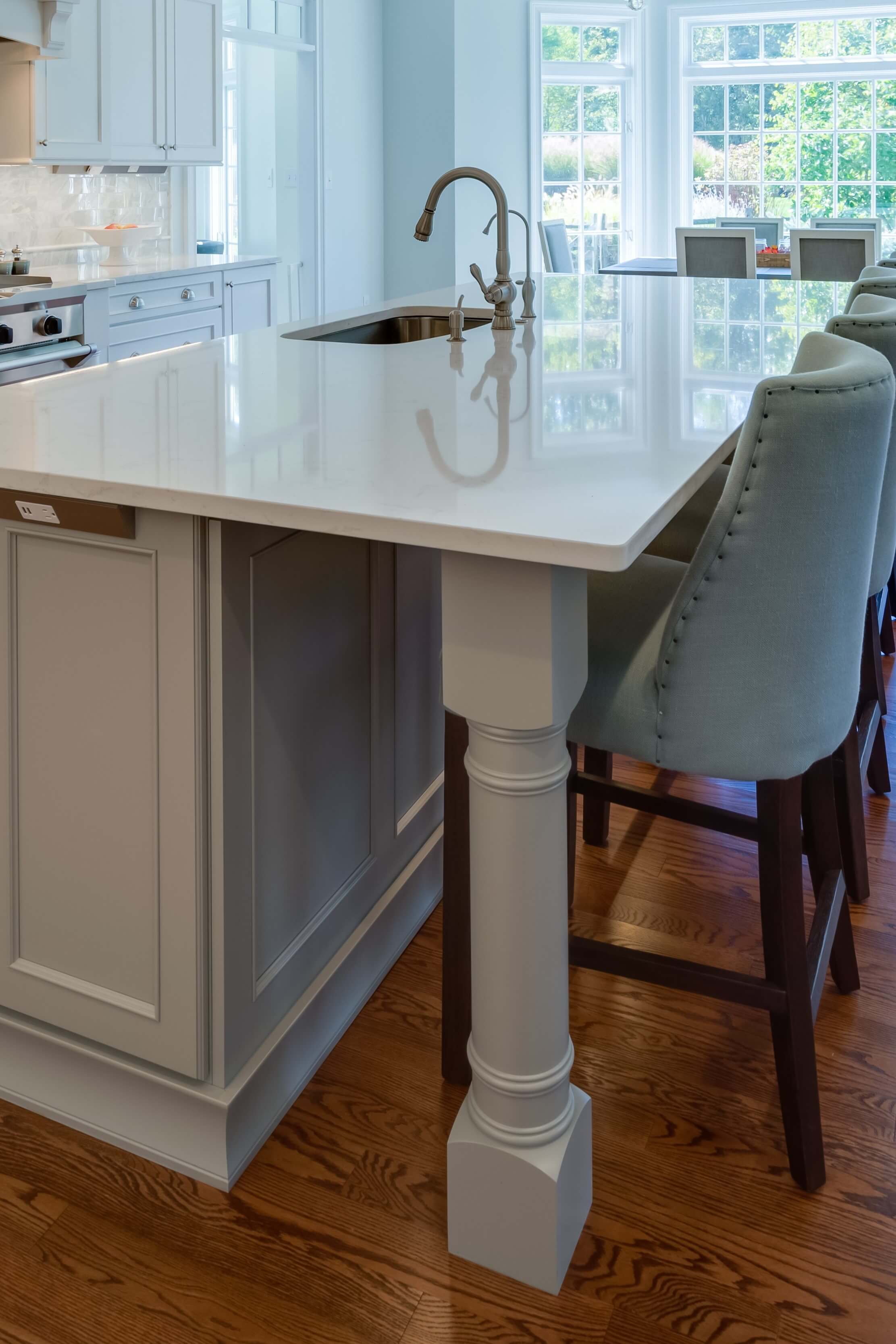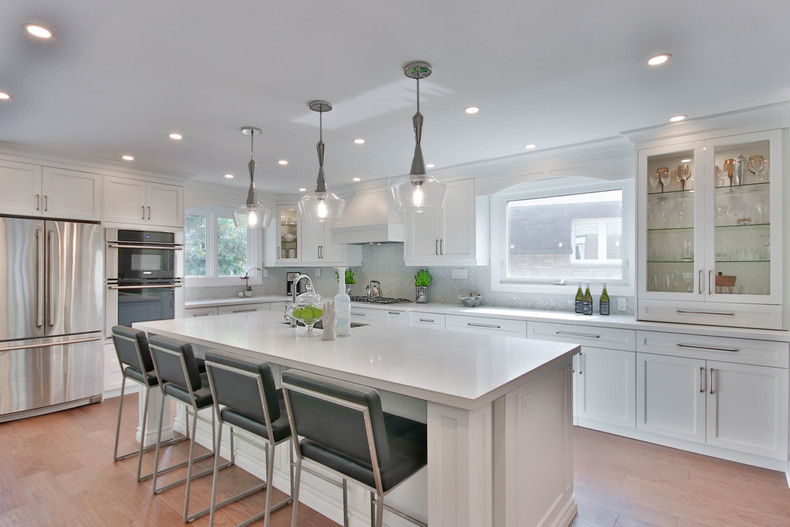Key Factors To Consider for Discovering the most effective Legs For Kitchen Island for Your Layout
When selecting the perfect legs for your kitchen area island, several vital considerations come right into play that can substantially affect both performance and visual appeals. The selection of height, material, and style need to straighten with your overall kitchen style to make sure an unified appearance.
Determine Your Design Preference
When choosing the suitable legs for your cooking area island,Establishing your design choice is essential. The legs of your kitchen area island not only serve a practical function however likewise contribute considerably to the general aesthetic of the area. For that reason, determining your design style-- be it contemporary, rustic, conventional, or industrial-- is important.
For a modern-day cooking area, take into consideration smooth, minimalistic legs that match open spaces and tidy lines. On the other hand, a rustic setting may benefit from even more durable, farmhouse-style legs made from reclaimed products. Traditional cooking areas often prefer transformed or elaborate legs, which can add a touch of beauty and sophistication. An industrial aesthetic might call for steel legs that highlight a raw, unfinished appearance.
Furthermore, take into consideration the height and percentage of the legs in connection with the island's surface. This makes sure the aesthetic balance and performance essential for daily usage. Assessing the existing elements in your kitchen area, such as kitchen cabinetry and appliances, can likewise lead your decision, making sure cohesiveness in layout. Ultimately, your style choice will certainly influence not only the option of legs however additionally the overall harmony of your kitchen area's layout.
Select the Right Product
Picking the right material for your kitchen island legs is critical in making sure both durability and aesthetic appeal. Different materials use unique advantages, and the option commonly mirrors your layout choices and useful needs.
Timber is a popular choice, providing warmth and flexibility. It can be discolored or repainted to match your kitchen area decoration, making it versatile to numerous designs, from rustic to contemporary. Wood might call for routine maintenance to preserve its look and stability.

If you look for a distinct touch, take into consideration acrylic or glass materials. They can produce an impression of space and lightness in your kitchen area, making them an excellent option for smaller sized locations - Legs For Kitchen Island. However, these choices might call for careful handling and maintenance to prevent scrapes.
Eventually, the product you pick should line up with your kitchen area's general layout, ensuring that the legs serve both ornamental and useful objectives.
Consider Height and Proportions
When creating a cooking area island, elevation and percentages play an essential function in making sure capability and convenience. The basic height for a kitchen area island normally ranges from 36 to 42 inches, straightening with standard counter elevations or bar elevations, specifically. This measurement is vital for harmonizing with bordering countertops and stools, enabling convenience of usage throughout dish prep work and social communications.
In addition, the island's percentages must enhance the general cooking area design. Consider the proportion between the island's size and length, guaranteeing it offers ample surface area without crowding the kitchen.
Additionally, the height of the legs or base can affect the visual charm and functionality. Taller legs might lend a much more modern-day, airy feeling, while shorter ones can stimulate a conventional, based appearance. Eventually, meticulously taking into consideration height and percentages will certainly result in a cooking area island that is both visually attractive and functionally reliable, enhancing the general layout of the space.
Assess Stability and Durability
A kitchen area island's legs have to not only match its elevation and percentages but likewise give adequate stability and longevity to support daily tasks. The legs are important to the general capability of the island, as they birth the weight of the countertop and any additional tons, such as home appliances or cooking jobs.
When evaluating stability, it is critical to think about the leg design and product. For example, sturdy metal or solid hardwood legs typically use premium toughness contrasted to lighter products like crafted timber or plastic. Furthermore, a broader base can improve security, minimizing the danger of wobbling or tipping during usage.
Durability is equally important; the legs need to withstand damage from daily use. Consider finishes that protect versus scrapes, dents, and moisture, especially in a cooking area setting. In addition, examine the high quality of building, such as joints and fastenings, which can significantly influence the legs' lasting performance.
Ultimately, purchasing well-crafted legs that prioritize security and longevity will ensure your cooking area island stays a dependable workspace for several years to find, enhancing your cooking experiences while maintaining visual charm.
Variable in Upkeep and Care
Upkeep and care are essential considerations for ensuring the durability and performance of kitchen area island legs. When selecting legs, it is vital to assess the materials utilized, as various alternatives call for varying degrees of maintenance. For example, wood legs might require routine refinishing or sealing to stop dampness damage and scratches, while steel legs may require routine polishing to maintain their luster and protect against rust.
In addition, the finish related to the legs can affect upkeep demands. A high-gloss finishing might be less complicated to clean but might show scrapes and finger prints quicker than a matte surface. It is suggested to pick products and finishes that complement your lifestyle; dig this for instance, if you often hold events, go with durable products that can withstand wear and tear.
Additionally, consider the cleaning process associated with maintaining these legs. Smooth surfaces frequently require very little effort, while intricate designs may accumulate dirt and crud, demanding even more labor-intensive cleansing techniques. Legs For Kitchen Island. Eventually, factoring in the maintenance and care needed for your picked cooking area island legs will certainly not only improve their aesthetic appeal yet additionally guarantee their practical integrity in time
Conclusion
To conclude, picking the optimum legs for a kitchen area island necessitates careful factor to consider of different elements, including layout style, product choice, security, upkeep, and Discover More Here height. Each component plays an essential duty in making sure that the legs not only enhance the visual allure of the cooking area however likewise offer the needed support and sturdiness for day-to-day use. An educated decision will inevitably contribute to a functional and visually pleasing kitchen area environment.
The legs of your kitchen island not just serve a practical function however also add considerably to the overall visual of the area.Maintenance and care are critical considerations for ensuring the longevity and efficiency of kitchen island legs. Wood legs may require periodic refinishing or securing to avoid dampness damage and scrapes, while steel legs may require normal polishing to maintain their sparkle and avoid rust.
Ultimately, factoring in the upkeep and treatment required for your picked kitchen island legs will certainly not only boost their aesthetic charm however also guarantee their practical honesty over time.
